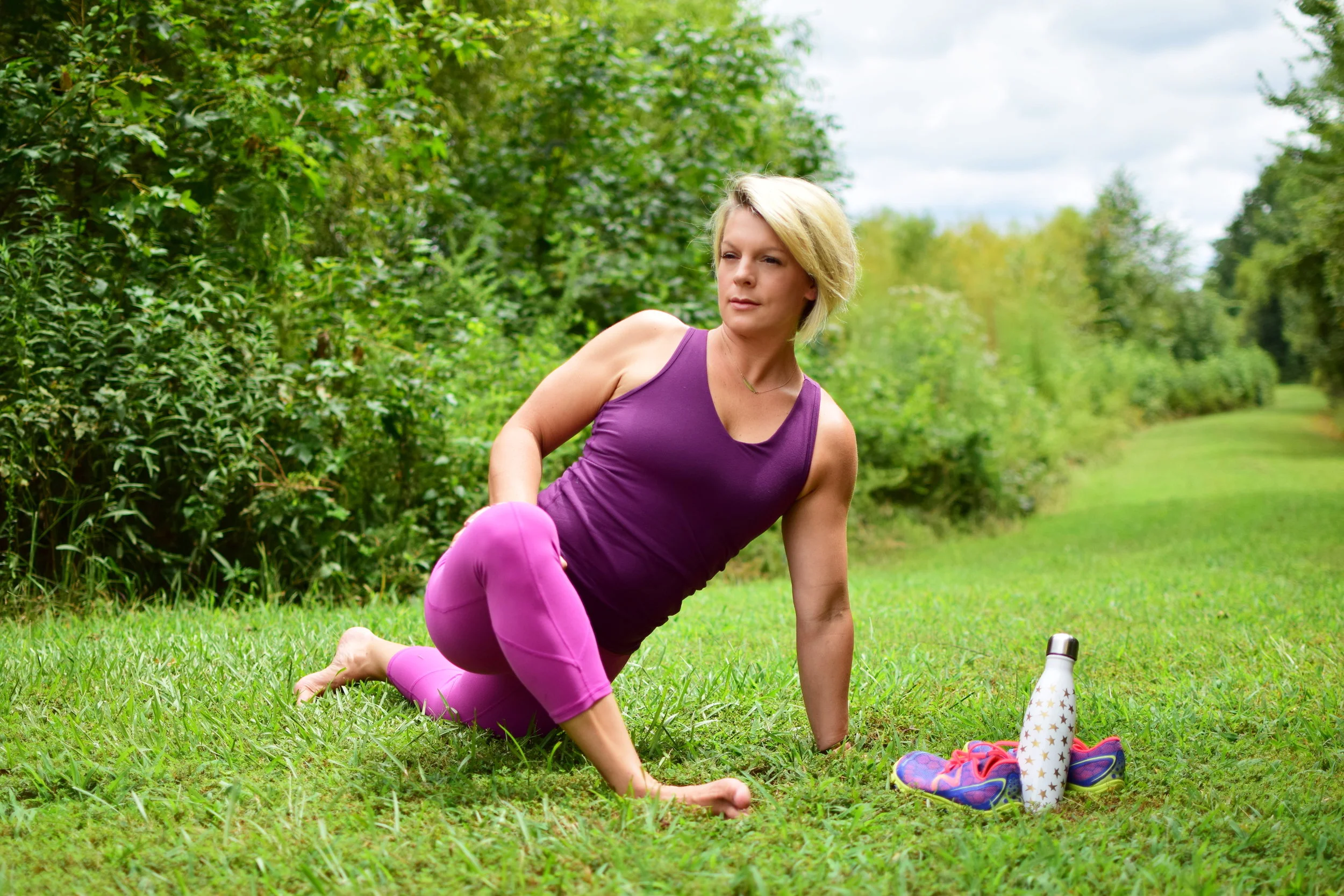“It hurts right here,” Tracy said pointing to her calf. “And, I’m sure I have plantar fasciitis,” she added.
As a former USAT coach, I am used to my athlete’s self-diagnosis. I listen to her symptoms which are consistent with overuse.
When I ask if she had been doing yoga and myofascial release work, a sheepish smile comes over her face. The answer is clear. Time-crunched athletes training for distance races often toss the stretching, opting for a quick foam rolling session over time on the mat.
A quick visit with her doctor confirms what we suspected. With three weeks until the race, she’s instructed to stay off her feet. This is not an ideal diagnosis.
Because of the nature of the activity, distance runners can experience injuries like knee pain, plantar fasciitis, achilles tendonitis and IT band syndrome. Many of these ailments can be avoided with targeted plan like yin yoga.
Yin is a mostly floor-bound practice with long holds near edge of the athlete’s ability. The purpose of yin is to stretch tight connective tissue.
By applying a gentle stress in a posture for up to 6 minutes, athletes will increase elasticity, circulation and increase overall tissue strength and resiliency. This stress on fibers stimulates the reorganization of collagen, cross links and elastin.
I like to combine yin with myofascial release. Both encourage the body to remodel tissues and help restore range of motion. Adhesions in the fascia will begin to separate and allow for enhanced tissue hydration and circulation.
Here are some of my favorites yin poses to help you make it to the starting line in optimal condition. Add these postures to your program to target some of those well known pesky and sometimes sidelining injuries before they start.
NOTE: I advise you hold these postures at 50-70% of full capacity. Allow the muscles to fully relax and be still in the poses. Practice slow, full breathing and use props for comfort whenever. If you have pain, back out. Windshield wipe the knees side to side several times after each pose.
1. Kneeling or virasana. Options: 1] Sit on your heels. 2] Toes turned under 3] Lean back 4] Lay back on your elbows or if possible take it to the ground with one knee drawn in. Options include sitting on the heels, leaning back and turning your toes under. Modify by using a blanket behind the knees, under the ankles or simply coming forward. Hold for 1-2 minutes (less for toes turned under).
2. Low lunge or dragon. Step one foot forward in this deep hip and groin opener. Drop back knee to the ground behind the hip. Options: 1] lunge 2] lunge with knee open beginning to twist 3] reach back to the baton and take a hold of your ankle if available. Hold one pose for 3-5 minutes and all poses 1-2 minutes each.
3. Squat or malasana. Cop a squat to open the hips, build ankle strength and release the low back. Sit on a block or raise your heels on a blanket for comfort and endurance. Hold for 2-3 minutes. Shake the legs out when done.
4. Half butterfly or janu sirasana. Draw one foot in toward the groin. Lengthen through the spine, looking out over the extended leg. Tilt the pelvis slightly forward and hinge forward, rounding the spine if it feels good. Hold for 3-5 minutes and then switch legs.
5. Shoelace or gomukhasana. Sit on a blanket for lift and cross legs. Lengthen through the spine, tilt the pelvis forward, and hinge forward. Hold for 3-5 minutes and then switch sides.
6. Deer. Stagger your legs to the left. Sit tall and twist to the right, lowering down only if comfortable. If you have knee pain, adjust the legs or simply back out. Hold for 2-5 minutes before switching sides.
7. Double wHAMMIEs. Kneel and place a therapy ball behind the knee. Lean back for pressure and adjust accordingly. Work down the calf towards the heel. Avoid bone and extremely painful areas but look for areas of tension and knots.
